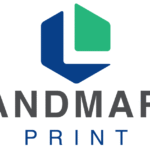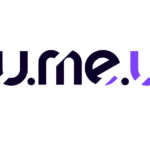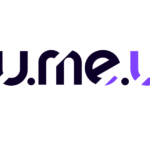Facebook ads have long been the gold standard in social advertising, in part because Facebook allows brands to target incredibly niche markets, and has empowered marketers to get rapid insights into winning combinations of creative, audience, placement and other variables to optimize their campaigns.
That’s according to Timothy Masek, senior growth strategist at marketing agency Ladder, who said Facebook’s 2012 acquisition of the image sharing app-enabled Facebook to add Instagram as a simple placement option in the Facebook ads platform, which is precisely what marketers wanted.
Instagram Ad Statitics
“Since 2015, you can use a basic toggle in the Facebook Ads Manager platform to choose to show your ads on Instagram,” Masek added.
As a result, Patrick Havey, social media manager at digital marketing agency Passion Digital, said it can be tempting to treat Instagram ads the same as Facebook ads.
“However, despite both now copying each other’s features – The Great Storification, anyone? – users still engage with the platforms in different ways,” he said.
And therein lie some opportunities for savvy marketers.
What’s more, Havey noted that Instagram posts tend to get 10 times more engagement than Facebook posts on average.
Instagram Engagement
Instagram engagement stats
“This gives you a unique opportunity to build trust and connect emotionally with your audiences in an uncluttered environment,” he added.
Indeed, Nathan Mendenhall, director of social strategy at digital marketing agency That Agency, agreed Instagram is a high-engagement platform and is a great option for generating both brand awareness and site visits.
Instagram Ad Costs: How Much Does it Cost to Advertise on Instagram?
However, according to Keith Baumwald, founder of boutique consulting agency Leverag Consulting, costs for Instagram ads are usually slightly higher than their Facebook counterparts.
“With highly targeted ads, you could be paying over $5 a CPM” (cost per thousand impressions) on Instagram, Baumwald said.
According to Masek, on the other hand, whenever Facebook tests a new ad feature, like a new creative type or a new audience type, it drops the CPM to make the feature more accessible and alluring to marketers.
“So while a typical CPM on Facebook Ads will be around the $10 mark today, it was closer to $5 on Instagram,” Masek said. “Today, the gap is getting narrower and narrower. This meant that running ads on Instagram was immediately going to be more cost effective for marketers – in fact, twice as cost effective.”
At the same time, Masek said as Instagram started rolling out ads, users were clicking on them at a much higher rate than they were on Facebook.
“Users have become accustomed to ads on their Facebook newsfeed and started clicking less on them – the same way the first banner ad on the web drove a 44% CTR and today’s banners drive a 0.1% CTR,” he added. “So when Instagram rolled out ads, not only were they cheaper, but the CTRs were through the roof.”
For his part, Damon Gochneaur, founder of digital marketing agency Aspiro Agency, noted the average cost to advertise on Instagram can vary wildly depending on the type of ad, the audience targeted and the type of creative used.
“In general, single image ads will be the most expensive, with a carousel or multiple image ads generally performing better than single image ads,” Gochneaur said. “Additionally, video ads will typically outperform both single image ads as well as carousel ads. In addition, the audience you’re targeting will also have an effect on the cost of the ad.”
Example of a video ad on Instagram from Netflix
“This [$5 CPM] is still much cheaper than pretty much any other channel for display ads, especially given the fact that you can target so effectively,” Baumwald added. “That said, if you're in a highly competitive market, either because of your product or location, the costs can rise dramatically.”
Here’s a look at how advertisers can rein in those Instagram ad costs, no matter what market they are in.
1. Don’t over-produce your ad content.
In part because users can’t schedule posts on Instagram, Havey said candid-style posts perform well.
“If users feel like they’re seeing something fresh and authentic, they’re much more likely to engage and warm to your brand,” he said. “User-generated content can work wonders and helps create a two-way relationship between brand and consumer.”
instagram ad example
Havey also noted the best social ads are those that appear native.
“Nobody enjoys seeing an ad stick out like sore thumb in their carefully curated Instagram lifestyle feed,” he said. “As such, focusing on powerful visual storytelling and brand marketing, rather than trying to drive direct response, can often lead to better results.”
Scott Bauer, marketing director at digital marketing firm Navigator Multimedia, said Instagram users have quickly learned how to identify ads versus followers, so advertisers should remember they may only get a second or two of a user’s attention before he or she scrolls on.
“You’ll find the highest ROI not necessarily in the lowest CPM, so I recommend creating content that is in line with your target audience and don’t ask for the sale too soon,” he said. “Instagram is very visual and you want to create top-funnel content to introduce your business/brand.”
He added, “Too many advertisers treat Instagram like they do search ads and it’s not the same context.”
2. Build audiences with video.
Per Gochneaur, brands looking to lower Instagram ad costs should make slideshow-style videos from photo assets and use those video ads to target consumers that are top of the funnel and have no brand affinity.
“Video traffic is a lower acquisition cost and allows you to build audiences more affordably – the key phrase being ‘build audiences’,” he said. “Once you've driven traffic from the initial video ad, you'll then want to use remarketing mapped to a sales funnel in order to drive revenue and business growth from Instagram traffic.”
remarketing on instagram
3. Test your creative and audiences.
For his part, Masek said as users become more accustomed to Instagram ads and CPMs are tightening, marketers can increase their ad performance by testing.
“Facebook and Instagram reward the brands that serve relevant content to their users. The higher your CTR, the higher your relevance score and the lower your CPMs – that’s how it works,” he said.
"The way to make your ads relevant is to test different combinations of an audience, messaging and creative,” he said. “Don’t blast the same ad to everyone. Instead, pick five different audiences, set them up as separate as campaigns, and then create five different ads for each audience. Then, sit back, spend media budget and see how the world responds to your ads.”
instagram ad example
As a result, Masek said marketers might find one of those audiences is driving a 10x cheaper CPC, and that within that audience, one specific Instagram ad is driving a 5x higher CTR.
“Turn everything else off, and shift your budget to your winning combination. That’s how you game the system,” he added.
4. Optimize based on demographics.
Mendenhall noted that because Instagram Ads are launched through Facebook’s advertising platform, marketers have access to the same type of data – and they should use it.
“We recommend taking a look at which demographic is generating the most expensive results and omitting them from targeting,” he said. “If you check your data and see that men between the ages of 45-54 have a cost per click of $2.00, removing them from your targeting will help reduce your costs.”
Baumwald agreed. “By segmenting your ads based on different criteria, it will quickly become clear which audiences have the lowest costs,” Baumwald said.
Mendenhall also suggested starting an Instagram campaign with a select audience and adapting as costs rise.
“When you add/remove a targeting parameter and see the cost per result go down, make a note of that for the future,” he said. “Continue tweaking as needed.”
5. Mind your Relevance Score.
On a related note, Mendenhall pointed to Relevance Score, which is how Facebook judges the quality of an ad.
“This is based on creative, targeting and the results of your ad,” he said. “The higher your Relevance Score, the more efficiently your budget will be used.”
In addition, David Bosley, managing partner at digital marketing agency PBJ Marketing, said marketers who find they aren't getting impressions using the target CPA/CPL/CPI method can try taking the average of the suggested bid and doubling it.
“You likely will not pay that extremely high rate, but it will win you more auctions and, on average, you could still hit your target metrics,” he said. “Give it a try – it doesn't work for everyone but when it does it yields incredible results.”
6. Build out a campaign.
The ability to target the same users on Facebook and Instagram gives marketers a chance to build a campaign with multipletouch pointss without much trouble, Havey said.
“A social ad strategy that employs proper use of each platform can help take your audience from awareness to purchase to advocacy with ease if executed correctly,” he added.
7. Create dedicated landing pages.
According to Baumwald, brands should also carefully consider what happens once consumers who click your Instagram ads actually land on a webpage.
“Does the creative in the ad match what they see on the website? Are you making it easy for users to convert by following best practices?” he asked. “Better-converting landing pages make it much easier to absorb the costs of slightly more expensive Instagram campaigns. For a truly effective campaign, be sure to build out dedicated landing pages and don't send people to your homepage.”
Bosley noted the most successful Instagram campaigns have mobile-friendly objectives, like brand awareness, app installs, lead gen and sending users to a mobile-friendly website that loads in three seconds or less.
8. Retarget.
Adding a tracking pixel to a website or app enables brands to easily retarget consumers who have visited their sites.
“Since these people will already be familiar with your brand, the advertising will be much more effective,” Baumwald said. “The cost may be similar, but the number of people converting should be much higher.”
instagram retargeting
He added one caveat: “This will be a much smaller audience you're targeting so it's important to change your creative on a regular basis so that your audience isn't seeing the same ads from you over and over again.”
Report Story




Leave Your Comment